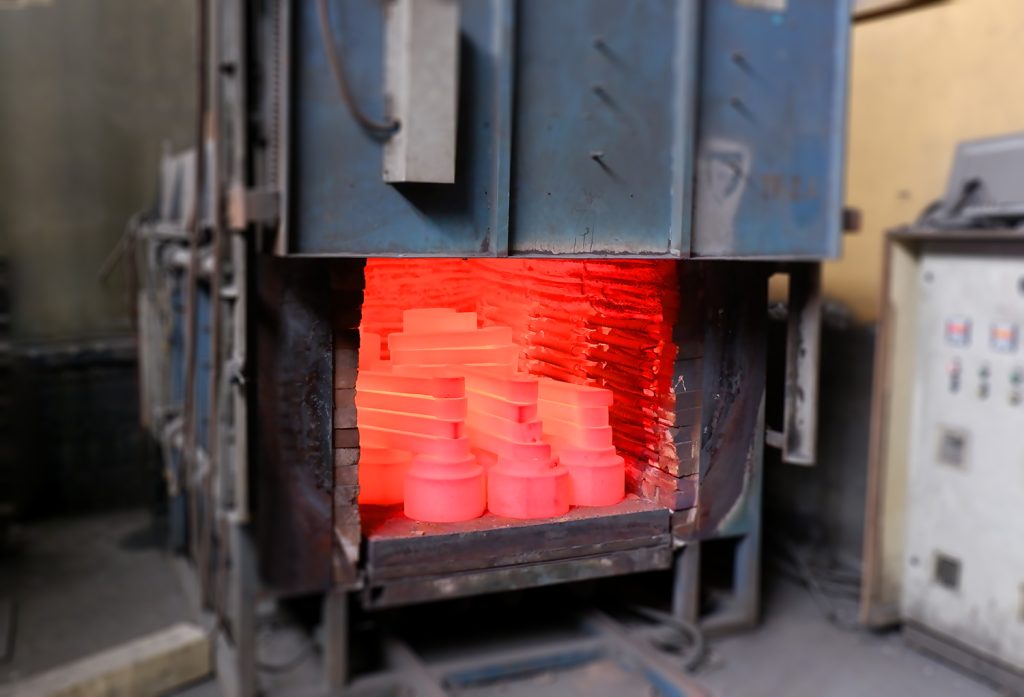NORMALIZING (HEAT TREATMENT-ANNEALING)
The purpose of the normalizing process is to gain the steel a homogeneous/uniform and fine-grained structure. The process is applied to obtain a predictable microstructure and an assurance of the steel’s mechanical properties.

Advantage
After forging, hot rolling, or casting, the microstructure of the steel becomes coarse-grained and non-homogenized and consists of undesired structural components such as bainite and carbide. Such a microstructure has a negative impact on the steel’s mechanical properties as well as on machinability. The steel can obtain a more fine-grained homogeneous structure with predictable properties and machinability through normalizing.
Application & materials
Normalization is mainly used on carbon and low alloyed steels to normalize the structure after forging, hot rolling or casting. The hardness obtained after normalizing depends on the steel dimension analysis and the cooling speed used (approximately 100-250 HB).
Process Details
During normalising, the material is heated to a temperature approximately equivalent to the hardening temperature (800-920°C). At this temperature new austenitic grains are formed. The austenitic grains are much smaller than the previous ferritic grains. After heating and a short soaking time, the components are cooled freely in air (gas). During cooling, new ferritic grains are formed with a further refined grain size. In some cases, both heating and cooling take place under protective gas to avoid oxidation and decarburization.